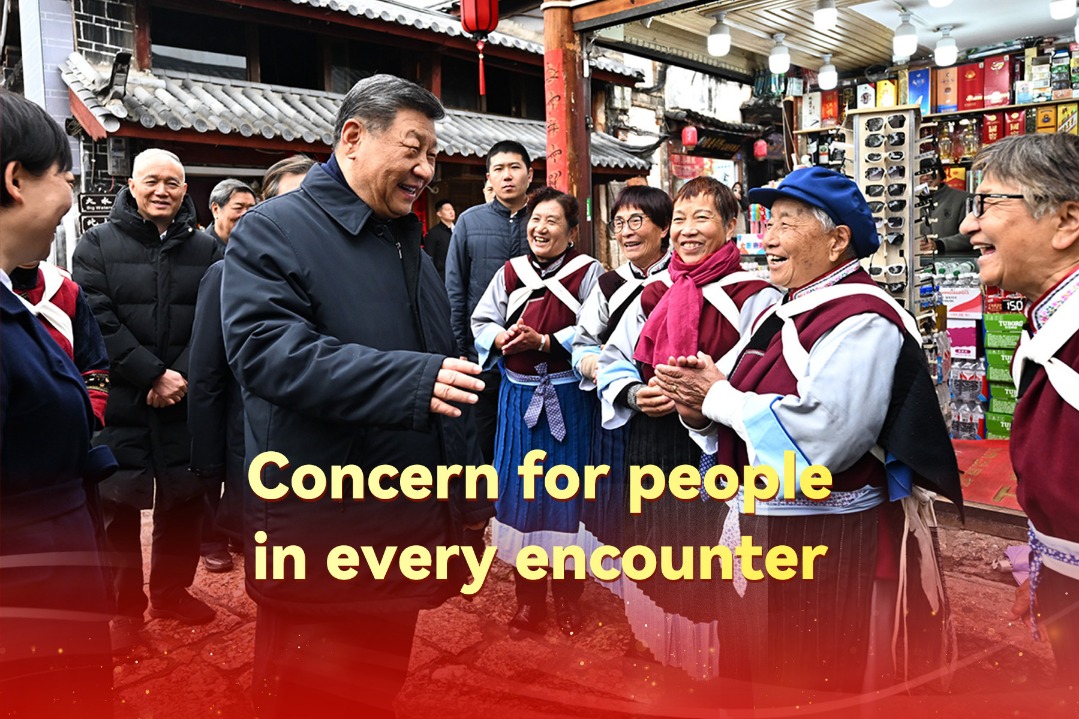Opportunity knocks as mill doors close

Hebei Iron & Steel sets up mill in South Africa to make up for dwindling demand
Although dwindling domestic demand and excess capacity have shrunk profit margins for most Chinese steelmakers, it has inspired some to look to overseas markets for sustained, long-term growth.
But Hebei Iron &Steel Co, China's second-largest steelmaker by volume, believes the current situation, though difficult, is something that can be overcome.
"When the going gets tough, the tough get going," company officials say, adding that a proposed steel plant in South Africa will help the company offset the current problems.
Hebei, a province that surrounds Beijing, used to produce about 30 percent of the world's steel output every year. But many of the steel mills in Hebei were forced to close due to falling prices and sluggish demand. Unlike most of its peers who were waiting for a government bailout, Hebei Iron &Steel took matters into its own hands and decided to set up China's biggest overseas steel mill in South Africa.
Explaining the rationale behind the move, company officials say that despite the glut in the domestic market, the growing demand in overseas markets, particularly in Africa, which is developing rapidly, will help the Chinese steelmaker maintain output at current levels.
In September, the state-owned steel company signed a deal to buy a 51 percent stake in a steel venture with the Industrial Development Corp of South Africa and the China-Africa Development Fund being the minor investors. The steel mill is expected to have annual output of 5 million metric tons, company officials say.
The first phase of construction is expected to start next year with a target to produce 3 million tons of steel in 2017. The second phase of construction, which will start in 2017, targets 2 million tons of steel production.
Yu Yong, chairman of the Tangshan-based company, says it was a "rational choice" to adapt to the variable situation and face the market challenges.
"We will be able to tap domestic, overseas resources and markets as well as secure a foothold in the global production chain," he says. "It's not only part of a national 'going out' investment strategy, but also signals the start of a structural shift in the steel sector."
China's steel industry has grown rapidly in the past decade, especially since 2008, due to a series of economic stimulus measures and cheap credit and construction contracts a strong incentive to build more steel mills and preferential tax rates.
Zhu Jimin, executive vice-chairman of the China Iron and Steel Association, says domestic steel production capacity has increased from 200 million tons in 2012 to 1.1 billion tons now. That accounts for more than half the world's steel capacity.
But with rising environmental concerns and excess capacity taking its toll on the industry, the government was left with no choice but to cut steel output by 27 million tons this year, in addition to the 10.44 million tons cut in 2013. Bigger cuts are on the way, sources say, adding that China plans to reduce 60 million tons of steel production by 2017, and another 26 million tons by 2020. Hebei province, with a total annual production capacity of 286 million tons, intends to cut output by 30 percent.
Mi Pengqi, a steel analyst at 315.com.cn, an online bulk commodity platform, says that Hebei Iron &Steel's move comes as domestic steelmakers feel the pressure from the government campaign on pollution and moves to impose stringent regulations and standards. The government is not only determined to tackle the industry glut, but also to ensure the market plays a greater role in the development of the industry.
"It has been a tough time for steel companies," he says. "Hebei's overseas steel plant will not only help internationalize its production capacity, but also transfer market pressure."
The African move is the culmination of the company's long-cherished plans of expanding in overseas markets.
The Tangshan-based company already owned iron-ore and copper mining assets in South Africa, having bought a 74.5 percent stake in a South African mining company. Upon the completion of the transaction, Hebei Iron &Steel will operate and manage Palabora Mining Co Ltd as its largest shareholder. The company hopes to capitalize on PMC's copper resources to generate annual revenue of about $10 billion from South Africa in three years.
PMC is a South African miner that Hebei Iron &Steel acquired from Rio Tinto Plc in August 2013. Meanwhile, the company is also looking to further bolster its global distribution network.
Close on the heels of signing the deal for the 5 million ton steel mill in Beijing, the company said it would take a controlling stake of 51 to 52 percent in Swiss-based steel trader Duferco for about $400 million, a deal expected to be signed this year.
The move, experts say, would give the Chinese company easier access to global steel resources and further boost its exports.
Peng Zhaofeng, general manager of Hebei Iron &Steel, said during a recent economic forum: "Duferco has a global network covering the iron and steel market in South Africa, and it can help us expand in the overseas market".
But experts cautioned that China's steel ventures abroad have never been easy with many steelmakers' overseas projects either folding or running up huge losses.
Mi says that despite a booming steel market with high growth potential in South Africa, which accounts for more than half of Africa's crude steel production, a bumpy road lies ahead.
lvchang@chinadaily.com.cn
| Many steel mills in Hebei province have been forced to close because of falling prices and sluggish demand. Provided to China Daily |
(China Daily Africa Weekly 11/14/2014 page14)































